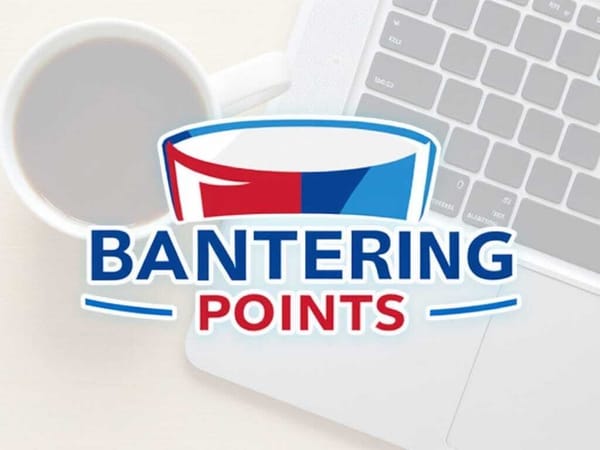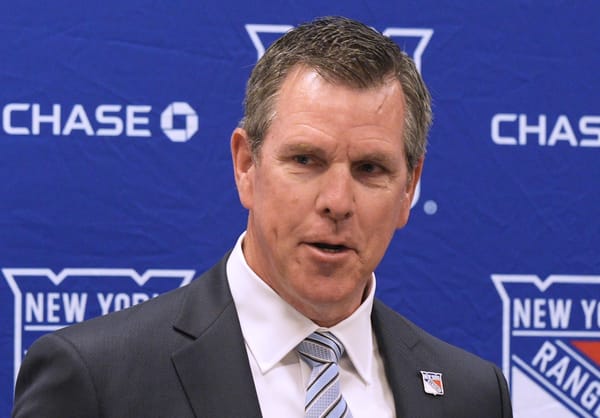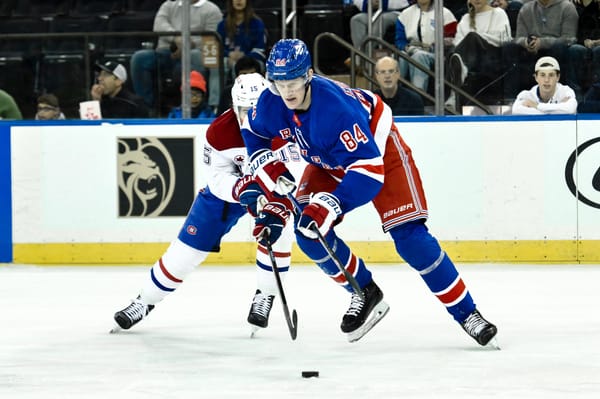What JT Miller’s New Contract Means for Kevin Hayes, Vlad Namestnikov, and Ryan Spooner
Earlier this week the Tampa Bay Lightning announced that former New York Ranger J.T. Miller re-signed with them to the tune of five years with an AAV of $5.25 million.
We have re-signed J.T. Miller to a five-year contract worth $5.25 million per season. https://t.co/whbQTPT7GO
— Tampa Bay Lightning (@TBLightning) June 26, 2018
It’s a big contract, not least of all because of the amount of money and term involved, but rather because it’ll have major implications for the Rangers’ own RFAs.
Miller was often lumped in with Kevin Hayes during his time in New York due to age, production level, and usage, while Vlad Namestnikov was acquired to compensate for the loss of Miller in the larger package that sent Ryan McDonagh to the Bolts.
Lastly, we’ve got Ryan Spooner, acquired as part of another one of the Rangers’ deadline deals. Spooner bears a similar profile to the three aforementioned players in terms of his age and the role he’s played on the Rangers so far and the role he may be playing down the line, barring any trades liquidating this surplus of young middle-six centers. Given the debate on Twitter and elsewhere about the kind of contract Hayes might get, and given the similarities between him, Namestnikov, and Spooner, a comparison between the four of them is worthwhile in hashing out exactly what we can, or might expect.
Starting off with a brief look at each player’s stats over the past three years, Miller establishes something of a baseline for what we might expect for Hayes, Namestnikov, and Spooner, or at least it gives us a control for which to make our comparison.
Looking at just his point totals here, Miller is the model of consistency, putting up 34 points in each of the last three seasons with 25-28 of them being primary points. The rate at which he notched all those primary points is relatively static too, with his primary points per 60 ranging between 1.35 to 1.56. Things begin to look different when examining the fancier stats among those involved here, with his relative CF percentage and relative expected goals percentage fluctuating pretty heavily.
Obviously these numbers depend a lot on usage and various other circumstantial factors, and the quality of his individual work generating scoring chances, represented through ixG, was pretty much the same throughout the past three seasons. His shooting percentage was higher than 10 percent for two of his last three seasons and then just under 10 percent for the most recent season. All in all, aside from the ratios he had of shots for to shots against and scoring chances for to scoring chances against, Tampa Bay knew almost exactly what they were getting when they re-upped Miller for five years.
Moving on to Kevin Hayes, we can see that his scoring, and particularly his primary scoring, has improved steadily over the course of the last three seasons. Although, like Miller, his CF% and xGF% relative to the rest of the team fluctuates wildly in this span. His shooting percentage jumped up in the last two years, but overall his work at generating scoring chances and actually putting the biscuit in the basket got better. Not too shabby for Mr. Hayes, and it’ll help him make a strong case during contract negotiations for a sizable raise. That and the fact that he is one contract year away from unrestricted free agency.
Namestnikov sees a bit more variance among the past three seasons, both in terms of year-to-year and individual stats. His point totals and primary scoring were high during the 2015-16 season and then took a dip between then and the most recent campaign, and although his shot and scoring chances ratios were quite good over the course of the last three his primary points per 60 minutes took a bit of a dip.
The silver lining here is that the quality of his individual scoring chances generated improved steadily throughout the last three seasons, with his shooting percentage hanging right around 10 percent in the most dramatically improved ixG season he had, which was the most recent one. On the whole though, he’s not been nearly as consistent as Miller or Hayes.
Lastly, Spooner presents inconsistency reminiscent of Namestnikov’s, although the precise contours of that inconsistency are slightly different. His relative CF and xGF%s were simply not good in any of the past three seasons, which is certainly concerning, but it is worth noting that he did play in significantly fewer games this past season than he did in the prior two seasons, so that’s a caveat in favor of his work.
However, the large print giveth and the fine print taketh away. Spooner’s shooting percentage was significantly elevated in the 2017-18 campaign, which is a pretty solid point against, especially considering it wasn’t a standard 10 percent or close to it but rather an objectively high 13.58 percent. Regardless of what team ends up signing Spooner, this will be one interesting contract.
Below you will find two charts, one comparing each player’s most recent season, and one comparing their scoring ratios of goals and assists relative to total points over the last three go-arounds. Keep in mind that all of this data is 5v5. Kevin Hayes received much less powerplay time than J.T. Miller did, for example, so it’s possible that his overall production would increase commensurate with the new role he may or may not play under David Quinn. Still, for the most controlled comparison possible, 5v5 is the way to go.
Now for the fun stuff: the possible years and dollar amounts each of the preceding players could get extended for. Below is the chart Bill Comeau put together as a visualization based on Matt Cane’s free agency contract prediction model. It’s interesting stuff to say the least, including the probabilities for both the term and AAV of their possible extensions.
Unpacking things a little bit we see that Cane’s educated guess is that Kevin Hayes most likely gets a four-year deal with an AAV of $4.83 million, with the possibility of a five-year or even six-year deal on the horizon at the AAV levels of $5.35 million and $5.38 million, respectively.
Namestnikov is most likely to get bridged for two years at just under $4 million, although it’s important to point out that none of the probabilities for term as it pertains to his future contract are overwhelming — he has a 20 percent chance of getting two years, a 15 percent chance of getting three, a 14 percent chance of getting four, and an 18 percent percent chance of getting five, and a wild card of a 17 percent chance at getting six. None of these contracts would be over $5 million AAV, which is a positive thing and not unexpected. This is presumably because part of the reason Jeff Gorton and his brain trust opted to swap Miller for Namestnikov was that Vlad would take up less cap space than our beloved Jonathan Tanner would.
Spooner is interesting here, with the most likely contracts being, like Namestnikov’s, bridge contracts. He’s actually most likely to get a one-year deal worth just $2.61 million average annual value, but there’s a slightly less likely chance he gets double that in term and a little less than a million more in AAV, with the two-year contract netting him $3.36 million per year. The likelihood that he gets more money and term on his next contract drops precipitously from there, so I’m not sure it’s entirely worth drawing that out (if you’ve made it this far I’m sure you can just read the chart for yourself and ponder it accordingly).
Now, given that contracts inflate on a yearly basis and given that the cap does too, it’s not a bad idea to conceptualize these potential deals in terms of cap percentage rather than just raw dollars and cents. There’s also the fact that while each of these players is around the same age, there’s slight differences there. J.T. Miller is 25 years old right now, and his cap hit jumped from being 3.77 percent of the cap at the time his last contract was signed to now 6.6 percent of next year’s cap total.
As for Hayes, he’s 26 right now and his contract accounted for a lesser 3.56 percent of the cap at the time it was signed, with his projected four-year, $4.83 million AAV contract coming out to a 2.51 percent raise to a total of 6.07 percent of the $79.5 million dollar team salary cap. For Namestnikov, who’s the same age as Miller, his likely two-year $3.80 million dollar contract would be 4.78 percent of the cap, although a longer term deal of four or five years winds up at 5.42 or 6.10 percent, respectively. That’s up from 2.65 percent of the 2016-17 cap — a fairly large raise if he does re-sign for the long haul. Spooner, who’s 26 and coming off a one-year deal worth a cap percentage of 3.77, would make 3.30 percent on another one-year or 4.21 percent on a two-year.
Now that I’ve dumped a boatload of numbers on you, I’ve got some personal opinions to throw your way, and you can make of them what you will.
Due to Hayes’ similarities to Miller, combined with his importance to the team over the past few years and heretofore untapped potential that David Quinn could help unleash, a five-year, $5.35 AAV deal seems not only likely, but reasonable. Depending on bonuses and potential NTC or NMC attachments, and depending on the extent of those limitations, he may get less, but he does also bring slightly more value than Miller, who’s mostly just expected to tap in whatever sweet dishes Steven Stamkos or Nikita Kucherov send his way (or Brayden Point, not that it’s a huge difference in quality of team mates there). Hayes on the other hand is expected to be a playmaking center capable of driving offense, and his steady improvement plus the potential we all see in his game makes him of greater structural importance to the Rangers as far as building the roster for years to come. To put it shortly, a five-year extension coming in somewhere between $5 and $5.5 million AAV would be more than fair. Tom feels the same way, and back in April he suggested Hayes should get paid in that range.
Namestnikov is a little bit different, given the chance that he’s simply bridged. Part of the point of acquiring him, as I mentioned earlier, is that he wouldn’t be as much of a burden on the Rangers’ cap management during this rebuild, so that said I could see a one or two-year deal being sent his way with a sub-$5 million salary attached. A three-year deal is not unlikely either, especially if the front office is trying to make him an attractive asset to be traded, but an assessment of his potential and the fact that he’s Russian may make him another player the Rangers want to build around (the Russian thing is just to encourage the inclusion of Vitali Kravtsov and to a lesser extent Pavel Buchnevich into the core of this lineup, which can’t be totally discounted). It’s really hard to say here though I think, but you can probably count on his next deal lacking any kind of NTC or NMC.
Spooner is kind of the odd man out here, with the two most likely contracts being bridge deals, and despite performing better than Namestnikov in the post trade deadline portion of the season, he’s the one I think gets traded. A strong contender looking to add a bit of scoring depth on a cheap contract may want to give him a look, especially if they anticipate their widest window is only one or two years anyways. There’s always the chance though that Gorton hangs onto him for now and then flips him as a rental when the trade market inflates to humongous big proportions and the return would be at its peak. He’s definitely no J.T. Miller one way or another, so don’t hold your breath waiting for the big one here (all apologies if you’re a big Ryan Spooner booster).
All that said, it’s no small task for GMJG to navigate these murky waters of who to extend for how long and how much. Add to that the fact that there’s likely some trade talks going on behind the scenes and it’s a lot to juggle. Personally I’m almost always cautiously optimistic, and I have a vague sense of tentative trust with Gorton’s plan (the only real bad trade I think he made was the Stepan deal, and even then it netted us Lias Andersson, who I think will be a strong building block for years to come). This rundown is of course only a cursory look at the Rangers RFAs and the possible impact J.T. Miller’s recent re-signing will have on them - I’d encourage you to do more research as you see fit and post your thoughts in the comments, as I’m always interested in watching friendly debate unfold and have a special fondness for trade and contract hypotheticals. Happy Thursday, everyone!
Salary and contract information via Cap Friendly unless otherwise noted.




